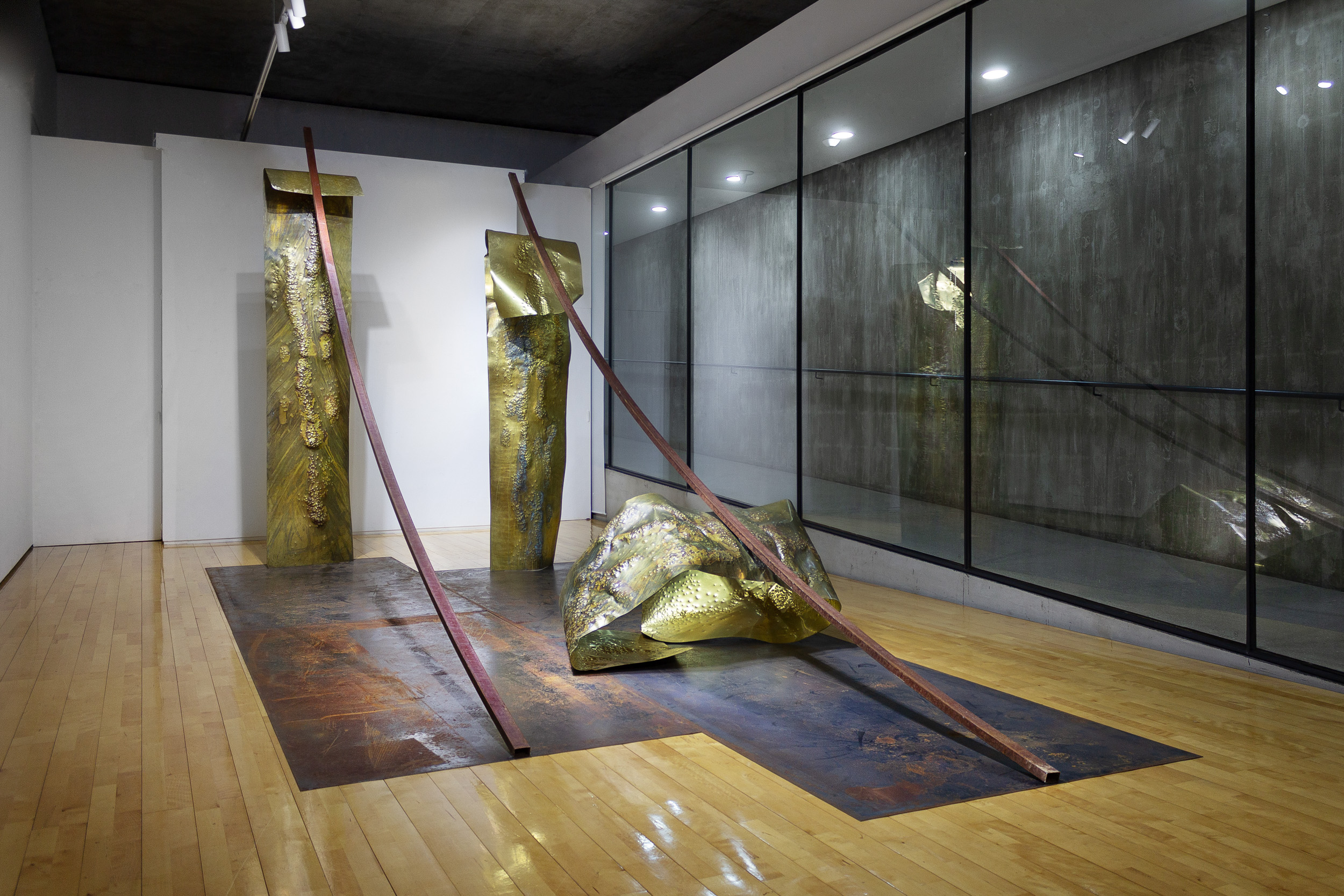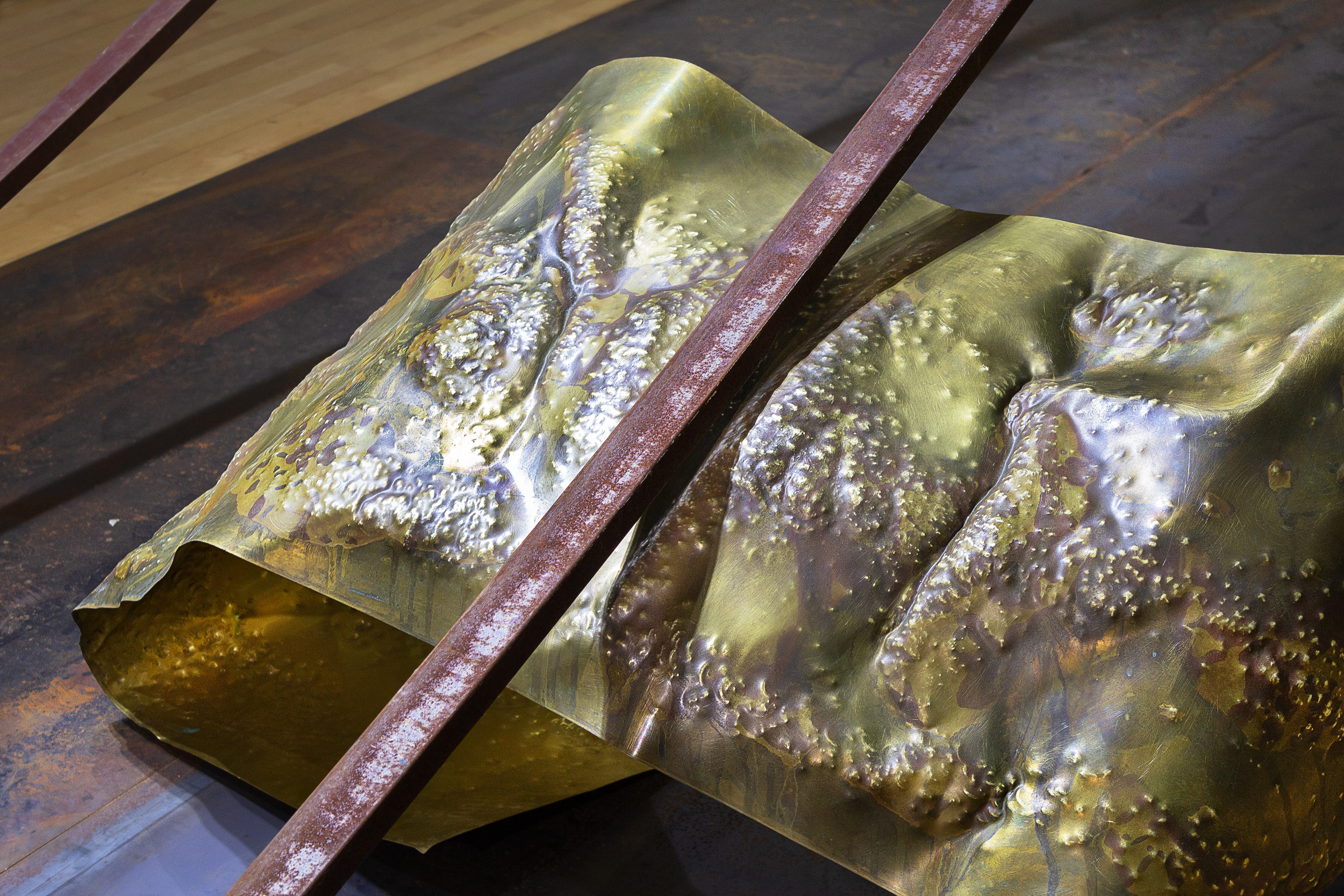Kaja Clara Joo ︎
Appendix
Press: ︎ | Edition: ︎
2024: Tears and Vinegar on Brass, Iron Poles, Steel Plates
“(...) The exhibition title ‚Appendix‘ signifies ‚an addition.‘ An appendix elucidates important concepts or content without disrupting the overall flow of a text. It provides details or contexts that may be overlooked while reading the main body, thereby facilitating understanding. In this context, ‚Appendix‘ works to reinstate new significance to objects that have lost their context, much like an appendix in society.
The first piece to catch the eye in the exhibition is Appendix I. This work is composed of bent rebar and brass that has been hammered and corroded, installed in a way that reveals a sense of dangerous tension. The thick rebar, which displays its substantial weight, leans against the relatively fragile- looking thin brass plate, appearing to embody an opposing duality while simultaneously demonstrating a complementary relationship. Perhaps this is why, like the personal narrative she carries, Appendix I seems to encompass both the Western perspective of time as linear and the Eastern perspective of understanding it as cyclical. Within her work, time is not simply a flow or a fixed concept; it is a continuous process of change and transformation. The technique of "hammering," which has been forgotten in Austria but still persists in Korea, transcends mere material processing to act as a symbolic metaphor for time and existence. It suggests that the ongoing nature of this method in Korea reflects the cyclical existence of humanity. Economically speaking, it is not surprising that such techniques have diminished in Korea, as it is considered a developed country globally.
On the other hand, the use of tears, vinegar, and water by Joo Kajato corrode brass symbolizes linear time, leaving or accumulating traces on the material. However, while this process is regarded in the West as a one-way flow of time that cannot return to the past, Kaja Joo seeks to find new meanings and textures within this process. Transformation signifies not merely destruction, but the birth of new forms and meanings. (...)”
Park Cheon,
Curator of the CIAN Museum Daegu, 2024




